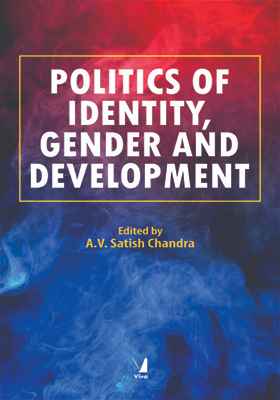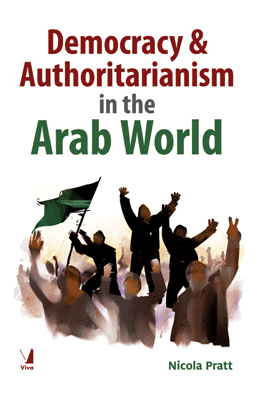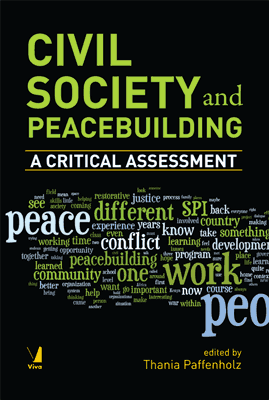Conflict Assessment and Peacebuilding Planning
Conflict Assessment and Peacebuilding Planning
Toward a Participatory Approach to Human Security
₹1,165.50 ₹1,295.00 Save: ₹129.50 (10%)
Go to cart-
Out of Stock
ISBN: 9789385919053
Bind: Hardbound
Year: 2016
Pages: 250
Size: 152 x 228 mm
Publisher: Lynne Rienner Publishers, Inc.
Published in India by: Viva Books
Exclusive Distributors: Viva Books
Sales Territory: India, Nepal, Pakistan, Bangladesh, Sri Lanka
Reviews:
“Schirch provides a wonderful range of analytical tools for peace practitioners from government, international agencies, and the NGO world.”
—Peter Woodrow, CDA Collaborative Learning Project
“Comprehensive, yet strategic in approach, the result of years of practice, this is a clear and systematic overview with practical and appropriate steps for assessment
and planning.”
—John Paul Lederach, University of Notre Dame
“A gift for professors and students. Schirch takes a complex, steadily evolving, and acronym-heavy field and makes it intelligible to just about any student”
—David Matz, University of Massachusetts, Boston
Description:
A Global Observatory Must-Read Book in Peace and Security!
Offering a systematic approach that links practical conflict-assessment exercises to the design, planning, monitoring, and evaluation of peacebuilding efforts, Conflict Assessment and Peacebuilding Planning has been carefully-and realistically-designed to enhance the effectiveness of peacebuilding practice.
Lisa Schirch presents a convenient, logical framework and a wealth of tools for improving planning and implementation. She also helps us to fruitfully question widely held assumptions. Her concise handbook, informed by on-the-ground realities, is an essential resource for building true human security.
Target Audience:
Students and academicians of international relations & Political Science, peace practitioners from government, international agencies and the NGO world.
Contents:
Glossary • The Conflict Assessment and Peacebuilding Planning Website • Acknowledgments
Chapter 1: The Purpose of This Handbook
Audiences • Building Blocks of Effective Peacebuilding • Defining Peacebuilding • Problems and Principles of Conflict Assessment and Peacebuilding Planning • Linking Insiders and Outsiders in Participatory, Asset-Based Processes • Using Systems-Based Approaches to Multistakeholder, Multisector Coordination • Improving Research Quality to Save Money, Time, and Mistakes
Chapter 2: Research Methods and Challenges
Research Principles • Data Quality • Data Validity and Distortion Problems in Current Assessment • Psychological Processes That Hamper Research • Constructing Conflict Assessment Teams and Processes • Conflict Sensitivity in Assessment, Monitoring, and Evaluation Research • Data Collection Research Methodologies
Chapter 3: Self-Assessment
Where, Who, Why, What, How, and When Questions • SWOT Analysis • Peacebuilding Partnerships
Chapter 4: Conflict Assessment
Conflict Assessment Framework • Lenses for Conflict Assessment
Chapter 5: Where: Understanding the Conflict Context
Where 1: Nested Model of Micro and Macro Context • Where 2: Cycle of Violence Map • Where 3: Appreciative Inquiry • Where 4: Connectors and Dividers • Where 5: Institutional Capacity and Human Security Baseline
Chapter 6: Who: Identifying Stakeholders and Potential Peacebuilders
Who 1: Stakeholder Mapping Lens • Who 2: Culture and Identity Group Dynamics • Who 3: Peacebuilding Actors and Capacity Mapping
Chapter 7: Why: Motivations
Why 1: Human Needs, Human Rights, Grievances, and Perceptions of Justice • Why 2: Worldview Perceptions, Brain Patterns, and Trauma • Why 3: Incentives for Peace Lens
Chapter 8: What: Systems Mapping of Conflict Drivers and Mitigators
What 1: Conflict Tree Lens • What 2: Systems Mapping of Conflict Drivers and Mitigators • What 3: Capacity Mapping Peacebuilding Activities
Chapter 9: How: Sources and Uses of Power
How 1: Power and Means Analysis • How 2: Identity and Power Imbalances Lens • How 3: Gender, Conflict, and Peacebuilding
Chapter 10: When: Timelines, Triggers, Windows
When 1: Timeline and Legacy Lens • When 2: Conflict Dynamics and Early Warning • When 3: Trends, Triggers, Scenarios, and Windows
Chapter 11: Theories of Change for Peacebuilding
Theory of Change Formula • Results Chains Linking Micro and Macro Peacebuilding Efforts • Examples of Theories of Change • Developing Theories of Change
Chapter 12: Peacebuilding Planning Guidance
Principles of Strategic, Systemic Peacebuilding • Conflict-Sensitive Peacebuilding Design • Moving from Micro to Macro Change • Integrated Model of Peacebuilding • SMART Peacebuilding Goals • Peacebuilding Log Frames
Chapter 13: Monitoring and Evaluation
Conflict-Sensitive Monitoring and Evaluation • The Differences Between Monitoring and Evaluation • Purpose of Monitoring and Evaluation • Scope and Dimensions of Monitoring • Baselines, Benchmarks, and Indicators • Data Collection Strategies • Summary Document
Appendix A: Writing a Conflict Assessment and Peacebuilding Planning “Learning Document”
Appendix B: Recommendations for Coordination and Donors
Bibliography • Index • About the Book
About the Author:
Lisa Schirch is research professor of peacebuilding at Eastern Mennonite University and founding director of 3P Human Security at the Alliance for Peacebuilding. Her publications include The Little Book of Strategic Peacebuilding, Civilian Peacekeeping: Reducing Violence and Making Space for Democracy, and Ritual and Symbol in Peacebuilding.







